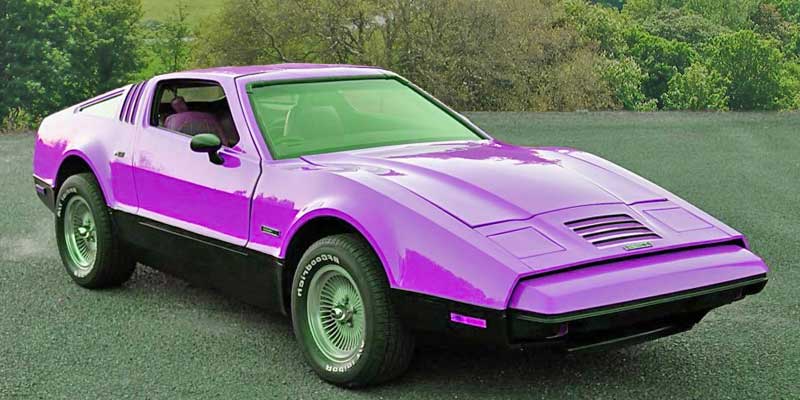Briklin SV-1

A government persuaded by an entrepreneur to invest pots of money in building a gull winged car made of an unusual material, in order to provide work for unemployed people. A complete failure to make any profit followed by the company's bankruptcy and the loss of all the cash that the government handed over. Sounds familiar? No, this is not John D DeLorean in Belfast, but Malcolm Bricklin in New Brunswick, Canada, many years earlier. What a pity that government ministers don't stude history more.
Birth of the SV-1
Bricklin started his business career with a chain of hardware stores, and then branched out into importing scooters and cars. He realise that the Canadian government could be open to a deal under which they handed over a large sum of money in exchange for him creating jobs. There seem to be some confusion between Bricklin and the Canadians; it was claimed that they thought he was ready to begin manufacture straightaway, whereas the research and development hadn't even started yet. However the first car arrived in mid-1974; it had a body composed of acrylic and fibreglass, a huge 5.9 litre V8 engine and a heavy – perimeter chassis. By this time Bricklin reckoned that he had US$100 million worth of orders; however this proved to be wildly optimistic.
Was it a good quality car?
It was marketed initially as The Bricklin Safety Vehicle; and it was claimed that even the gull wing doors were a safety feature since they would open out of the way of pedestrians and other road users. This was a dubious claim since they were electrically operated so could easily jam in the event of an accident, trapping the occupants inside! There were constant problems with the body panels; the acrylic and fibreglass layers often failed to bond together.
The door mechanism took 12 seconds to open or close the doors (provided of course that the battery was fully charged) and breakdowns were common. Attempting to open one door whilst the other was closing could burn out the motor! A motoring correspondent toook one out for a test and when he lent his arm on the armrest the entire door panel fell off.
The brakes were criticised (discs at the front but drums at the rear) and visibility was said to be poor.
Quality control was haphazard to say the least; a finishing kit had to be sent out to dealers who received the first cars that were built, but which were let out of the factory incomplete.
Was it good to drive?
Comfort was obviously not a priority; with a low roofline causing discomfort to tall drivers or passengers, a throttle pedal set so high that the driver's knees often touched against the steering wheel, and poorly designed seats contributed together to make it a very unpleasant car to drive. Hardly surprisingly, sales collapsed.
Was it good value for money?
It was originally calculated that each car would cost US$3000 but when the first ones rolled off the production line the price had increased to US$6500. This wasn't the end of it; the last models were priced at an eye watering US$10,000 or so.
Was it successful?
Bricklin's initial sales estimate was 10,000 cars per year rising to 50,000 a year within a few years. In the event, less than 3000 were created and around a third of them remained unsold when the company finally closed its doors, losing the Canadian government a total of around C$23 million.